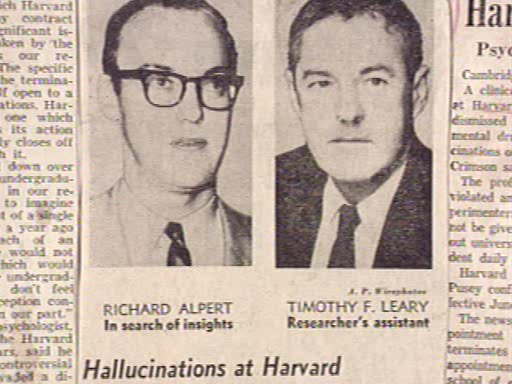 |
| Neuropolitics: The Sociobiology of Human Metamorphosis, Timothy Leary https://s-media-cache-ak0.pinimg.com/736x/18/ba/f6/18baf626b1a7060b89082ed4568ea5cf.jpg |
Neuropolitics: The Sociobiology
of Human Metamorphosis (1977) is a collection of essays written by Timothy
Leary, with the help of Robert Anton Wilson and George Koopman. The writings
occurred in a variety of prisons that Leary was incarcerated in from 1973 to
1976, with the majority coming from Folsom Prison in 1973. The book begins with
a page displaying the statement that space migration, intelligence increase, and life extension
(SMI2LE) are the strategies for evolution, which becomes an
important theme in the book. Additionally, Leary writes that fusion is the goal
of evolution. Neuropolitics is then
divided into two parts, “the twilight of terrestrial politics,” or how we got
here, and “the dawn of extraterrestrial politics,” discussing human life beyond
Earth. The book is used by Leary as a
commentary on modern society, an explanation of his eight-circuit model of
consciousness, and a postulation of his thoughts on human evolution.
The central
nervous system (CNS) is an essential aspect of Neuropolitics. Leary proposes the term Neurologic to mean the
understanding and controlling of one’s own CNS. Freeing our brains and bringing
them under our own control is the route to freedom. Leary conceptualizes humans
and society in the context of neural signals and communication. He often refers
to the CNS are a receiver, integrator, and transmitter, but on a wider scope than typically percieved. For example, the 1960s revolution
involved a cultural message that all were tuned in to, which was propagated by
a small group of individuals who received, integrated, and transmitted these
cultural signals. Most individuals would refer to the 1960s as a cultural
revolution, while Leary calls it a neurological revolution. All of the battles
between the conservatives and progressives, such as race, drugs, and war, were
just a war on new consciousness. New consciousness is ultimately akin with
Neurologic, with the goal of recognizing your conditioning and imprinting, shedding
neural fictions such as ego and social reality, and reprogramming your CNS to
encourage communication, intelligence increase, and eventually evolution.
| Better living through chemistry http://36.media.tumblr.com/619b83017f1000bb6befbcbf0c639d68/tumblr_ntkvevvdln1uvctgho1_500.png |
Leary discusses the 1960s as a very important shift in consciousness and sees it as a step forward for the human race. He advocates for the use of neuroscience to discover chemicals for altering minds and believed chemicals should be used to study our CNS and understand the limits of the mind. This concept, particularly with marijuana and psychedelics like LSD, was prominent among the counterculture, some of academic science, and even the government at a time (Project MK-Ultra). Leary views the rejection of culture as the recognition that social reality is merely a fiction that our minds have been programmed to tune into. Programming is used to describe the collection of our imprints, conditioning, and the way in which our CNS and thoughts have been shaped. One method to recognize and reprogram can be the use of drugs, or other consciousness-expansion techniques such as yoga and meditation, all which grew in popularity in the 1960s. LSD is a way to free oneself from the “middle class monolith”, and recognize the world as a here-now paradise. Leary claims that those involved in law and the military are neurologically incapable of these things, thus leading to Nixon’s repression of new consciousness. A senseless control of drugs was embraced, outside of the advisement of physicians and researchers. Narcotics officers are considered thought police attacking individuals for the victimless crime of cultural descent. This ultimately stems from the idea that one’s enemy is whoever keeps one from power, and that Neurologic would shift power away from those who traditionally have it.
 |
| Someone else's words, not mine nor Leary's https://www.antiquesnavigator.com/ebay/images/2013/310718572952.jpg |
Throughout Neuropolitics,
Leary makes reference to his eight-fold model of consciousness. This begins with
the first four terrestrial stages, which are our robot brain created by DNA and
imprinting, and then explains the four post-terrestrial states that help
expand our consciousness and evolve our species. The first stage is the
biosurvival circuit, related to safety-danger complexes learned in infancy. The
second stage is the emotional or ego circuit, including motion and emotion
learned as a toddler. The third stage is the verbal-symbolic circuit, focusing
on language and knowledge in the student years. The fourth circuit is the sociosexual circuit
learned in adulthood, which accounts for personality and domestic behavior.
Leary argues that these four circuits are the standard, but not only, circuits
available based on our conditioning. These make up our concept of reality and
must be constantly reinforced to keep the created reality from collapsing.
Leary ultimately uses examples of prisoners and Patty Hearst, a girl captured by terrorists, to demonstrate these circuits and how they can be overridden. He explains that
isolation will override circuit one and convincing someone of their
helplessness or reliance on others can override circuit two. Circuit three can
be adapted by isolating an individual from their language and forcing them to
use a new one, and the last circuit can be reprogrammed through introduction to
new sexual circuits. Ultimately, by holding an individual under specific
conditions, their original ideas of reality, culture, language, and self, can
be reprogrammed into a totally new perspective. Patty Hearst, a typical American college student, can end up joining the group that captured her, the Symbionese Liberation Army, when her circuits are overriden. Leary proposes another example
with the hippies experimenting with drugs to weaken their imprinting and begin
self-induced brain change. Leary advocates for our ability to understand and
shed the programming of the first four circuits, and go on to develop our
post-terrestrial consciousness.
The post-terrestrial
consciousness circuits are a bit harder to grasp than the terrestrial circuits.
The fifth circuit is the neurosomatic circuit, which involves sensory space,
detachment, and a hedonic feeling. He makes a reference to eastern cultures,
stating this circuit has the feeling of floating just above the ground. Some
techniques to develop and engage this circuit are sensory deprivation,
marijuana use, and yoga. The experiences of an astronaut may also engage this circuit. The sixth circuit, the neuroelectric circuit, is
the nervous system becoming aware of itself outside of circuits 1 through 5. This
circuit involves becoming aware of our programming and experiencing a
fission-fusion of all perceptions into parallel universes of alternate
possibilities. It can be engaged through psychedelic drugs, along
with techniques such as yoga. This circuit is essential because it is the
universal translator, and would allow us to communicate without the use of the
third verbal circuit, but through feedback, telepathy, and computer link-up.
This is what Leary would define as true reason, and notes that Voltaire
believed the Age of Reason was soon to come, yet we are still living in the
dark ages without the engagement of the neuroelectric circuit. The seventh
circuit is neurogenetic, involving signals from within individual neurons, and
a DNA-RNA dialogue. He relates this circuit to Jung’s collective unconscious,
and also finds LSD and out-of-body experiences can help engage this circuit.
The neurogenetic circuit is one of the keys to extending our lives to the
eventual potential for immortality. The final of the eight circuits is the
neuroatomic circuit. Here, consciousness may precede basic biological units and
the space-time continuum. One way of reaching this state may be through
out-of-body experiences. Leary states some philosophers who may have reached
this circuit, such as Socrates and Thomas Edison. This circuit opens new
universes and realities, and allows us to embrace our future selves. He also
includes rejection of this circuit as manifested in the aristocratic rejection
of science fiction and drugs. It is the activation of these post-terrestrial
circuits that will allow us to embrace evolution via SMI2LE.
| Perhaps an image from an unrelated paper will help clear this up http://i0.wp.com/ultraculture.org/wp-content/uploads/2013/03/brains.jpg?w=620 |
The second
part of Neuropolitics explains
post-terrestrial life once consciousness has been expanded. The human race has
solved the challenges of living on Earth: bio-survival problems, territorial
expansion and control, and reached a dead end at cultural homogeneity. Life on
Earth is now bringing new problems such as overpopulation, energy shortage,
aimlessness, overconsumption, and nuclear proliferation. Thus, the Earth is now
a useless vessel, making space migration the inevitable next step of evolution.
Leary explains that is notable in many religions involving a theme of
heavens beyond Earth, as well as culture in science
fiction such as Star Wars. Space migration will allow us to re-attain
individual freedom of space-time and create small group structures to best suit
our CNS.
 |
| This is one way of looking at things https://s-media-cache-ak0.pinimg.com/564x/ce/c2/9e/cec29e382a07eb100643a334ccc5a7ab.jpg |
Space
migration is inherently associated with intelligence increase and life
extension. First, intelligence increase is needed for the two other outcomes.
Intelligence is defined as the range and acceleration of information received,
integrated and transmitted. Leary uses this definition to state that humans are different than animals because of our superior capacity to receive, remember,
organize, and transmit. Intelligence increase is inevitable with consciousness migration
into the higher post-terrestrial circuits. Connectedly, life extension is only
possible with space migration and intelligence increase. New neural efficiency
is necessary for life extension, and the goal of science will be more focused
on the conquest of death.
| If this is a HOME, count me in http://ir.ebaystatic.com/rs/v/qhzetbbn1mzn3pohayxz0f2urmq.jpg |
The three tactics of evolution (migration, mutation, and metamorphosis) are being transformed as humans move into space. Leary claims that the message of our DNA code tells us to migrate from our nursery planet, as life will become an interstellar communication-transportation company. Exploration and exploitation are genetic imprints, and as we have maximized those on Earth, our womb, we must continue into space to survive and evolve. On Earth, migration has resulted in metamorphosis of the individual and mutation of the species through evolution, which will continue and advance in space. Humans will build HOMES, high orbital mini earth systems. Each HOME will be a complete ecosystem of extraterrestrial materials that are self-supporting and house a group of humans that creates their own, optimal culture. While there may be some risks, Leary concludes with the elegant statement “Since it will be fun to live in space, get smarter, richer, and live longer while evolving into new interstellar species, why not?” Ultimately, this is Leary's proposal of utopia.
| Hopefully you now know what he means http://29.media.tumblr.com/tumblr_lklld1w7KC1qjdviqo1_500.jpg |


